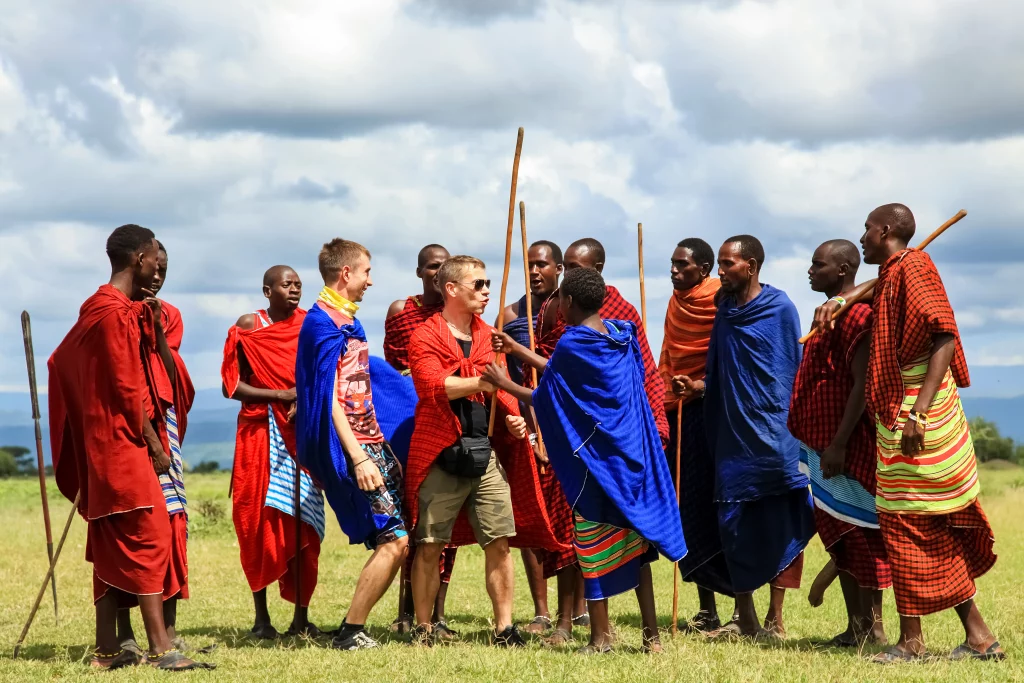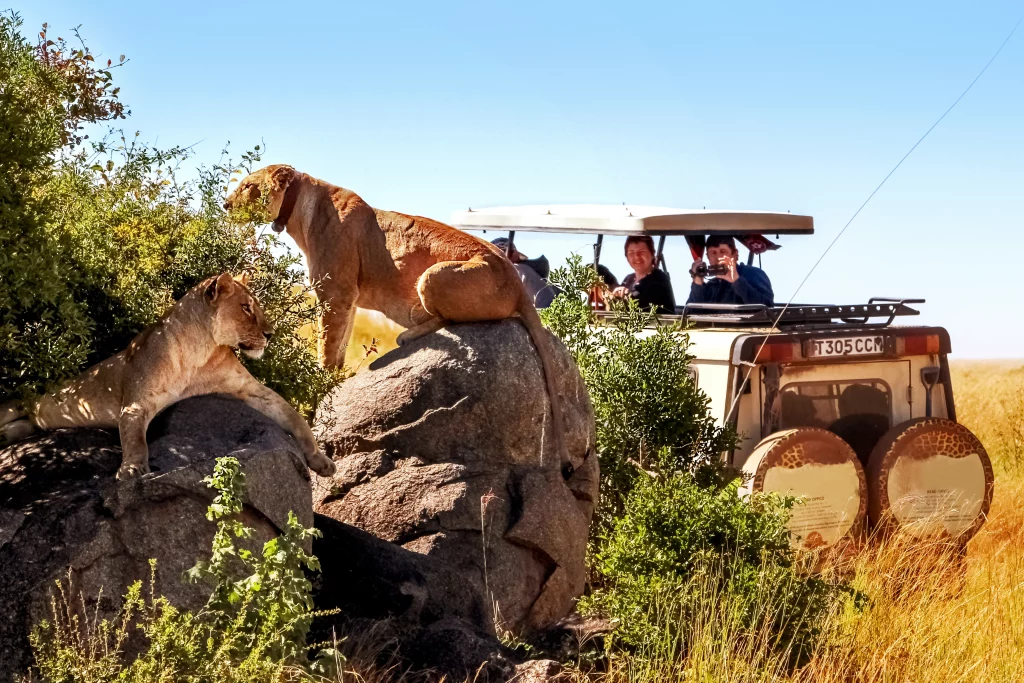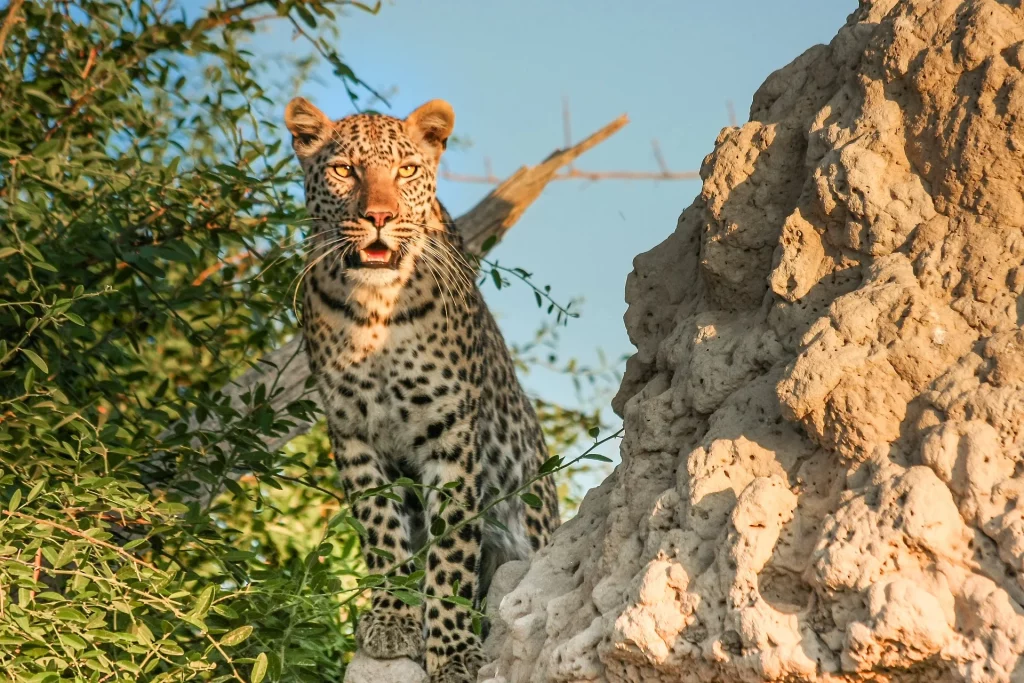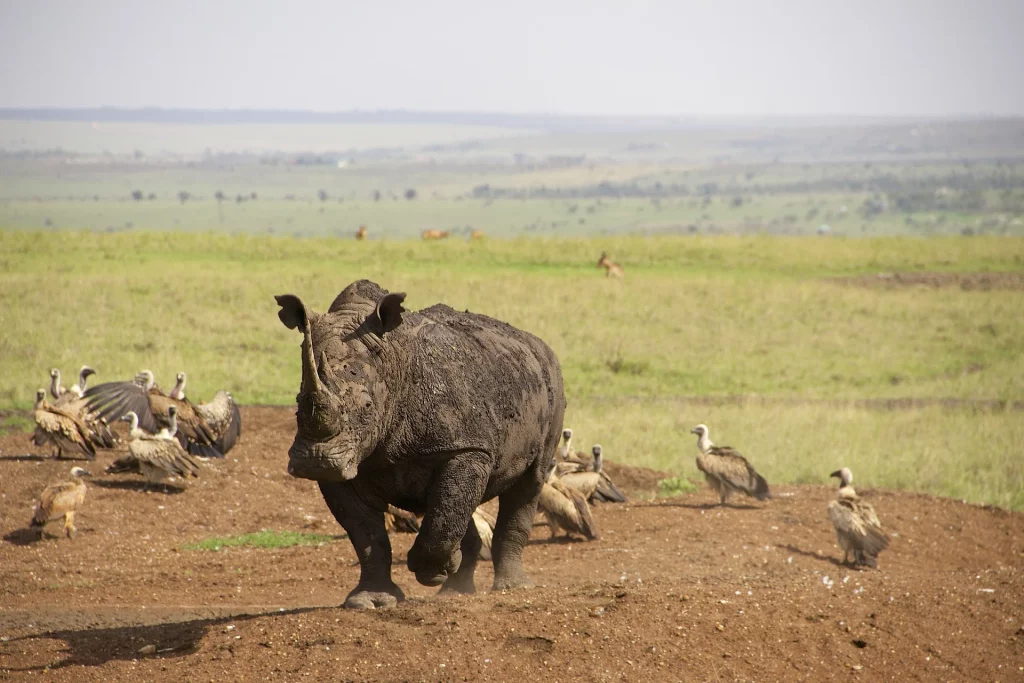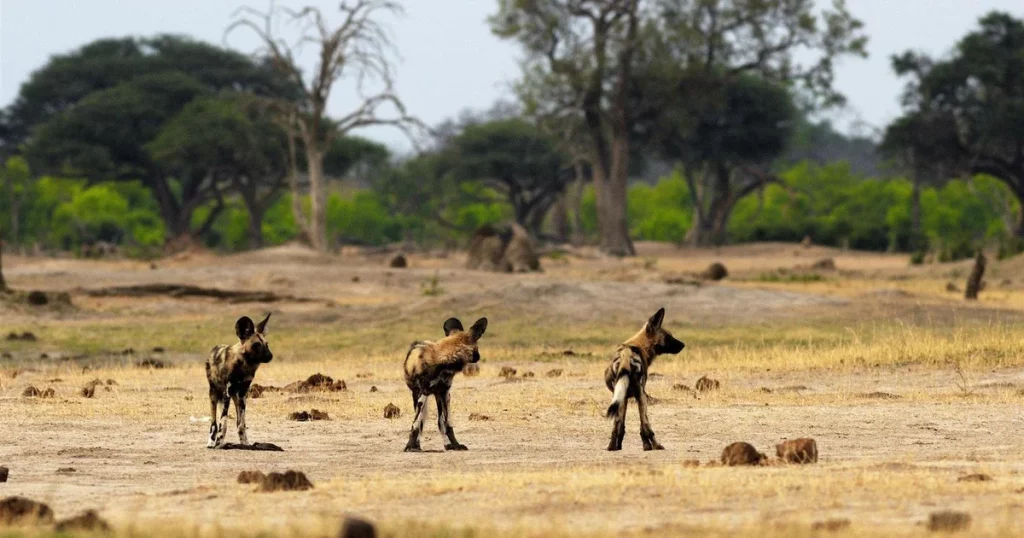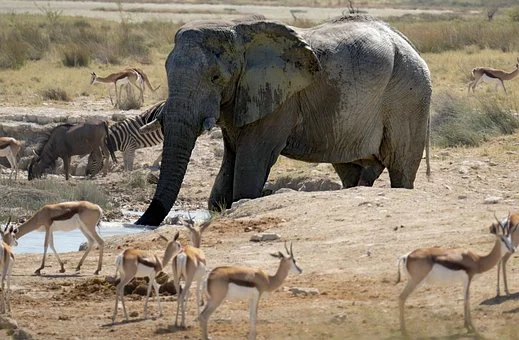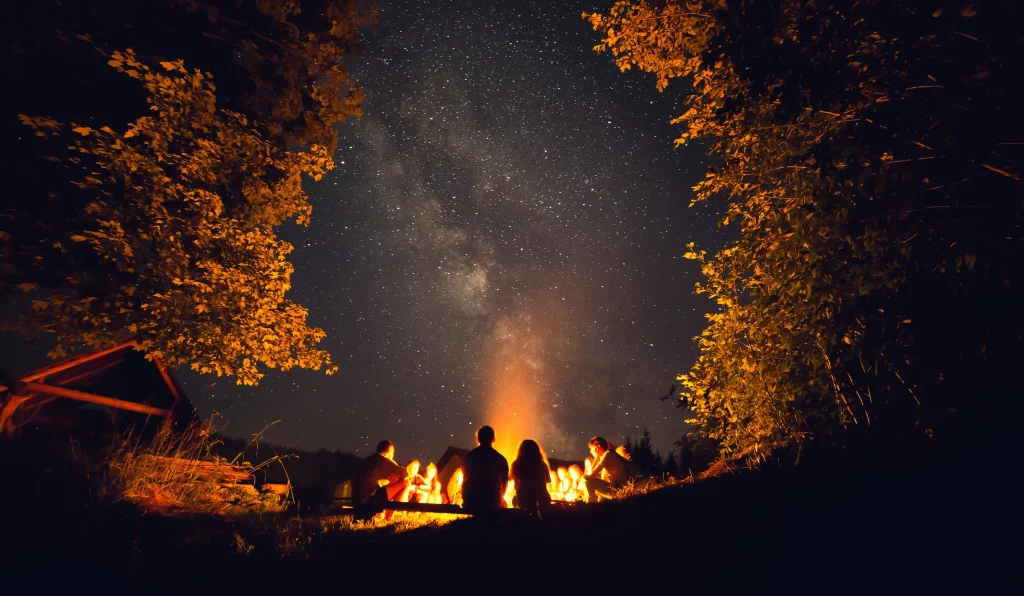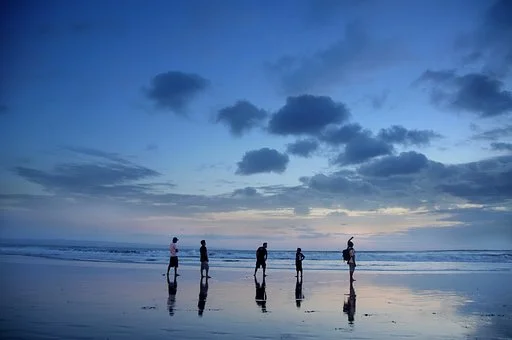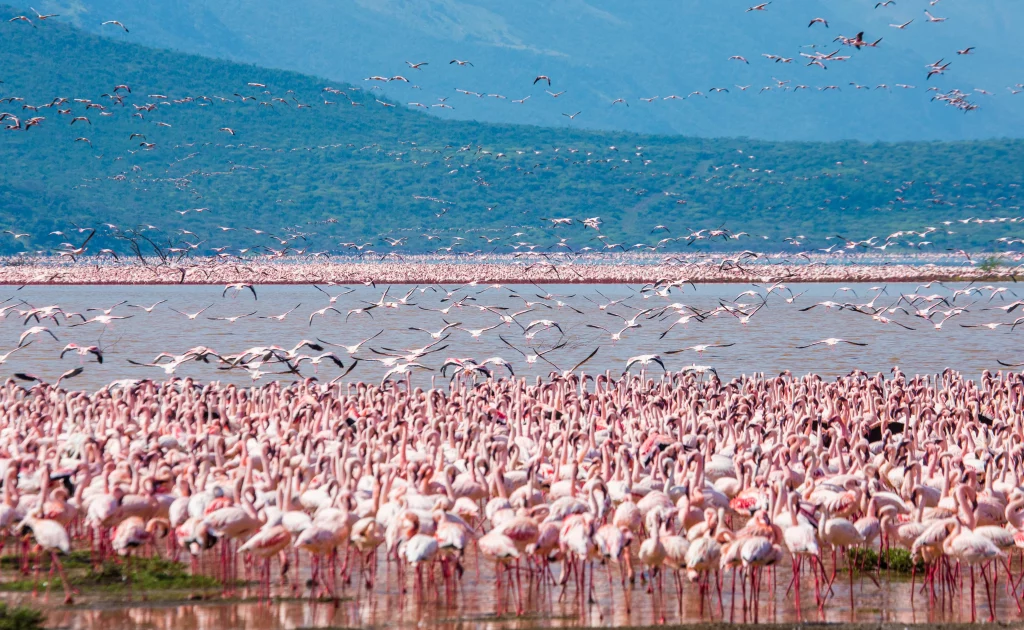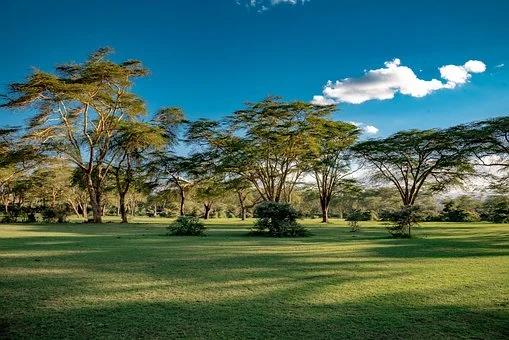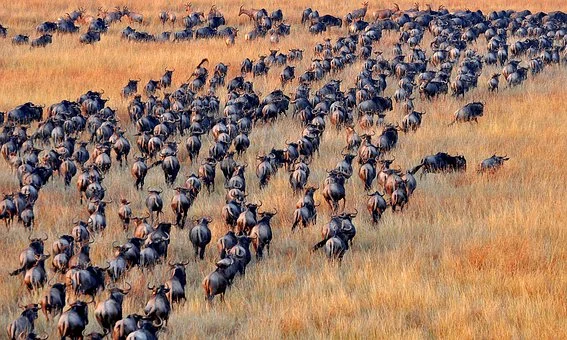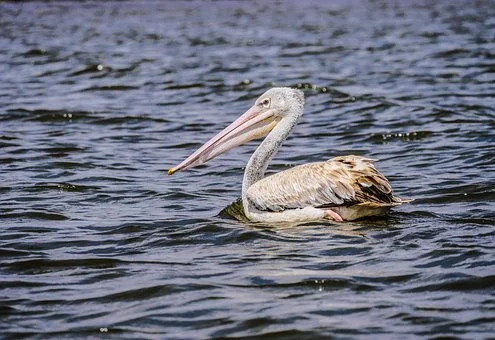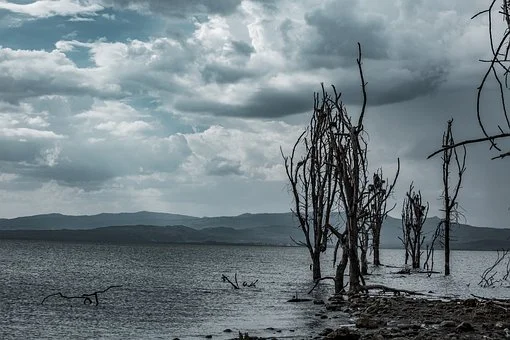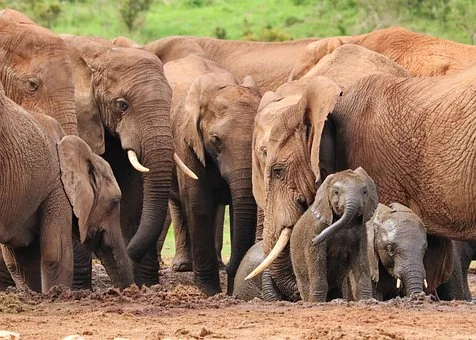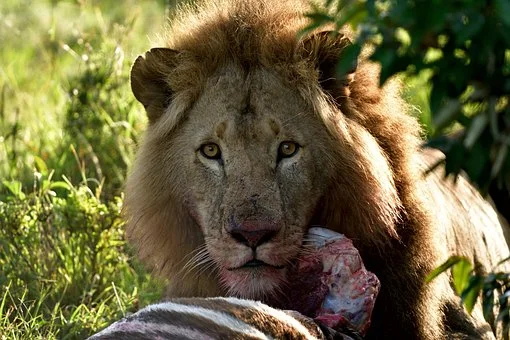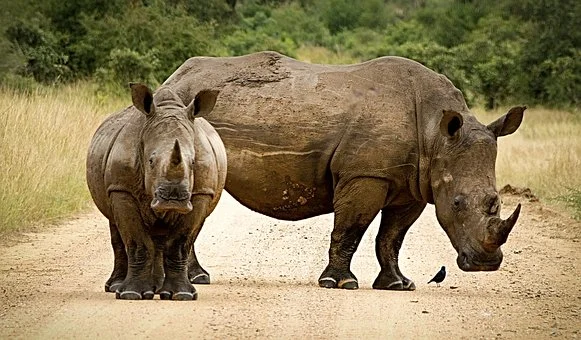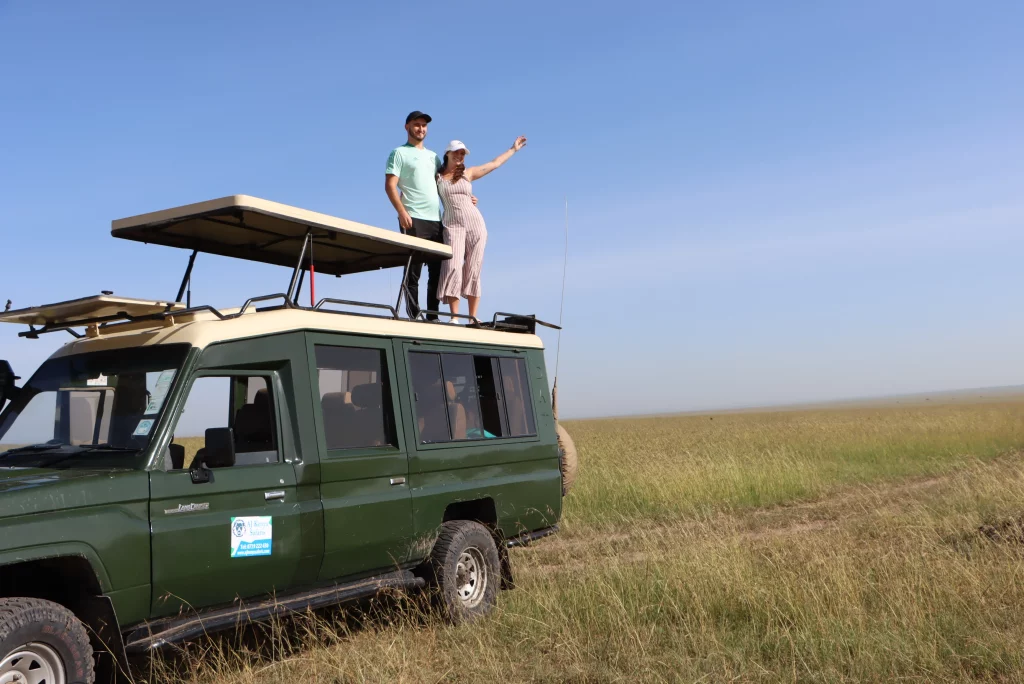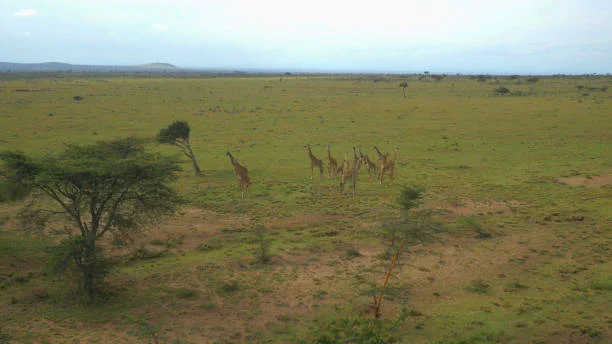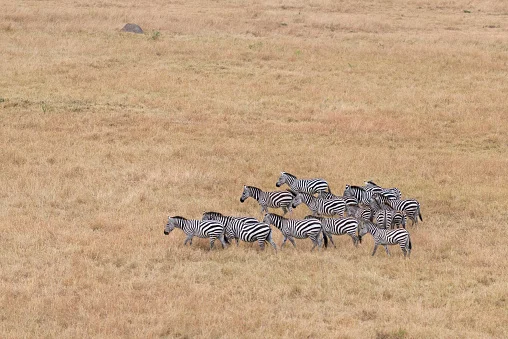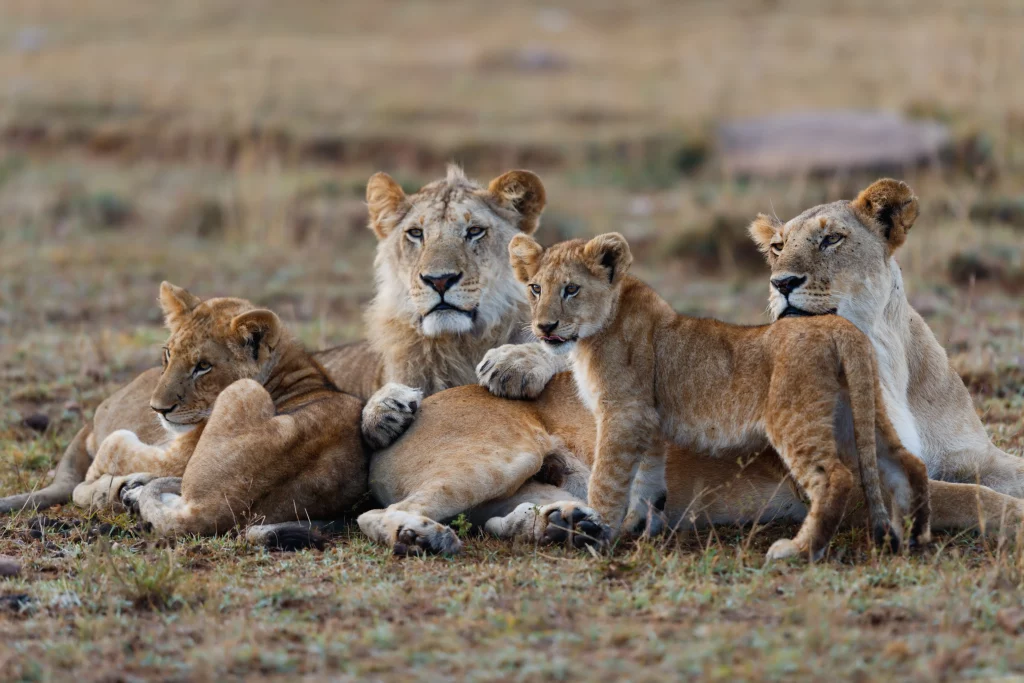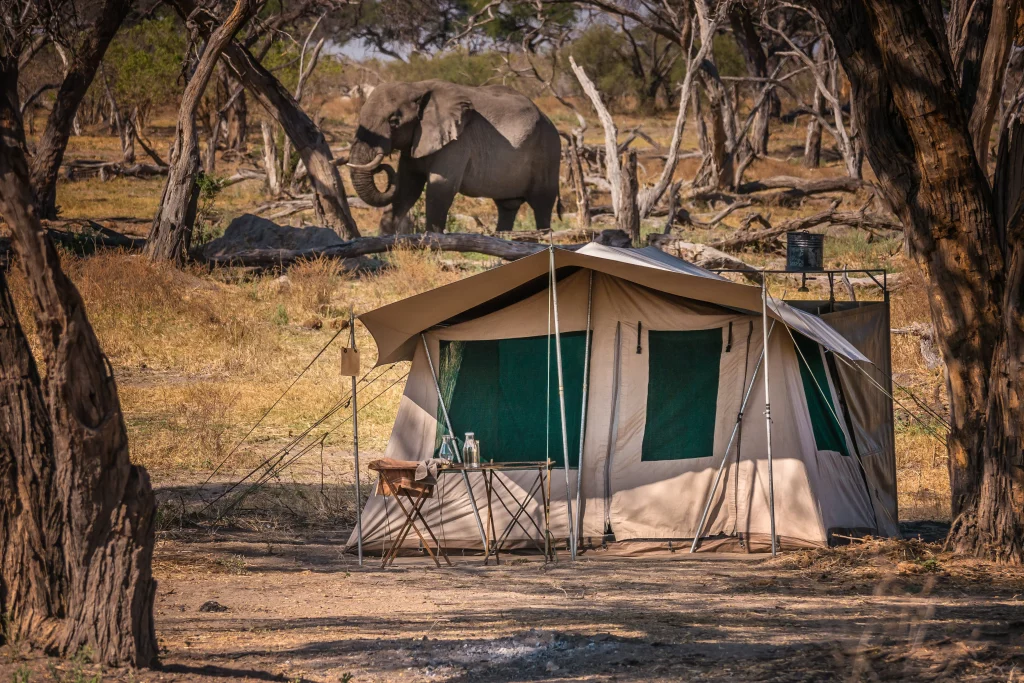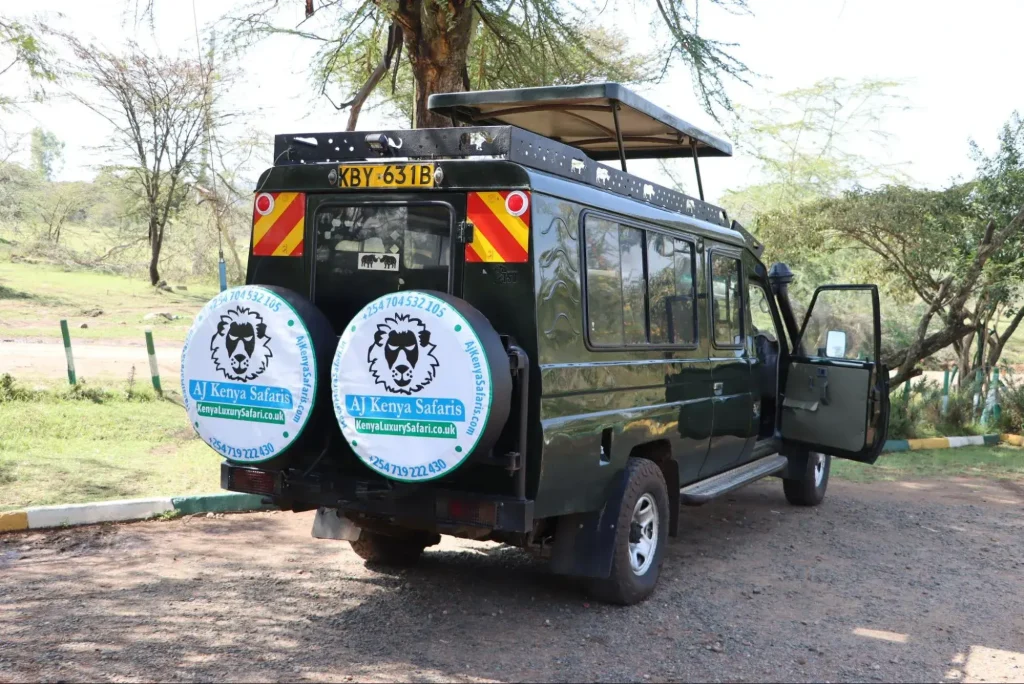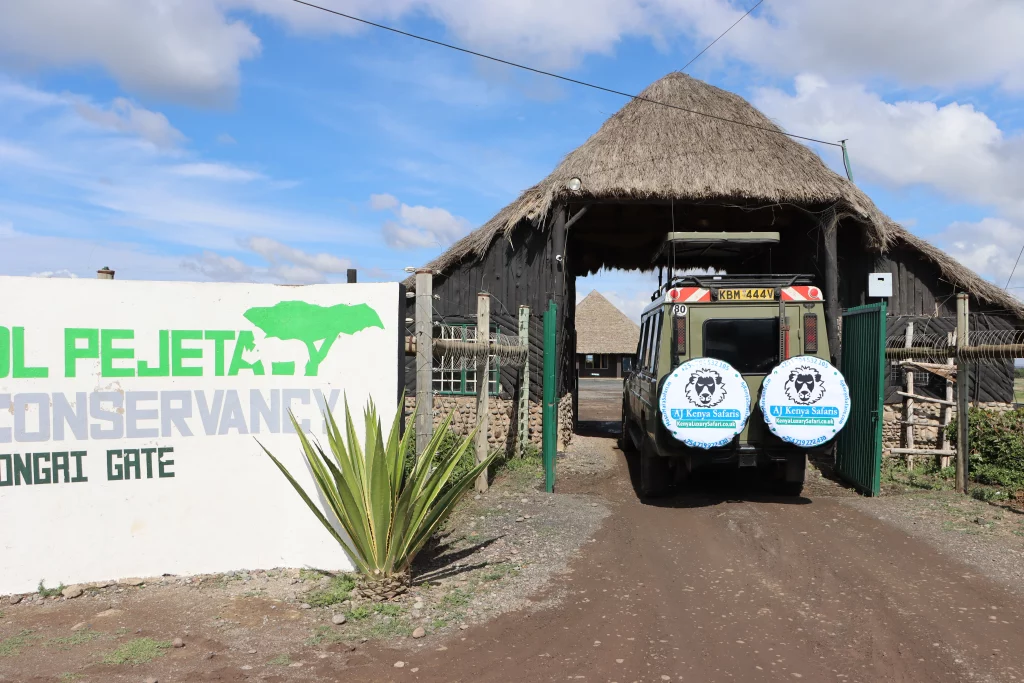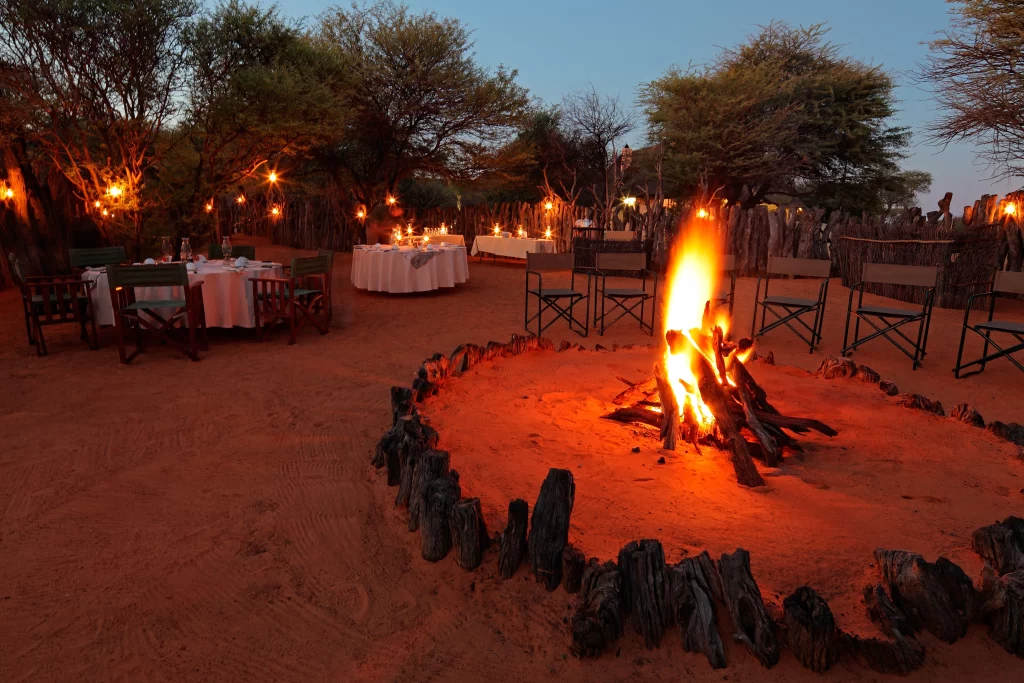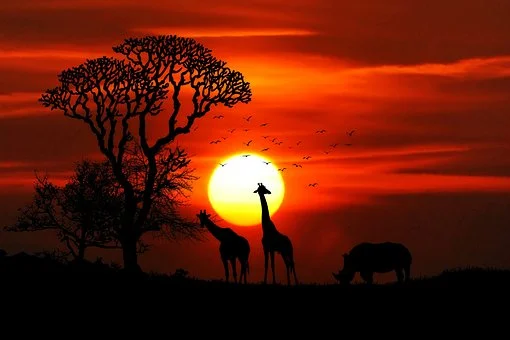2024 Wildebeest Migration Safari - Travel Guide, Cost & More
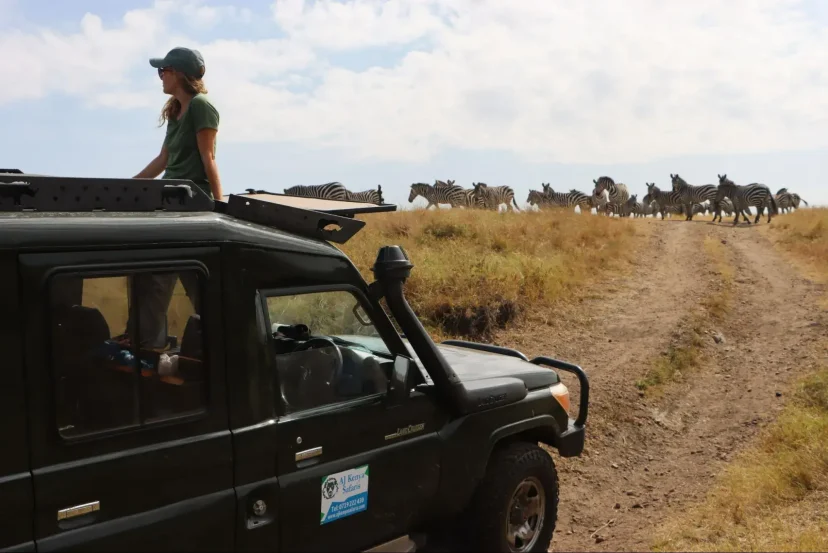
Are you planning on witnessing the 2024 great wildebeest migration in Kenya or Serengeti National Park? You have come to the right place. In this article, we will share the information you need to plan the best great migration safari packages. But first, let us share our contact and our most booked Masai Mara wildebeest migration safaris.
Contact Us to Start Planning Your Great Migration Safari 2024
Call or WhatsApp us via +254-704-532-105, and we will happily tailor-make the best 2024 wildebeest migration safari package for you.
You can also email us via safarioffers@kenyaluxurysafari.co.uk or james@ajkenyasafris.com, and we will respond within 16 hours.
We are the local experts of Masai Mara migration safaris, and we promise to plan the best trip for you.
Our Most Booked 2024 Wildebeest Migration Safari Packages
| Our Top Safari Packages for 2023 | Price Per Person From | View the Itinerary |
|---|---|---|
| 3-Day Aberdare National Park Safari | From GBP 941 | Detailed Itinerary |
| 3-Day Jambo Masai Mara Safari | From GBP 887 | Detailed Itinerary |
| 3-Day Masai Mara Safari from Nairobi | From GBP 798 | Detailed Itinerary |
| 3-Day Ol Pejeta Conservancy Safari | From GBP 864 | Detailed Itinerary |
| 3-Day Samburu National Reserve Tour | From GBP 815 | Detailed Itinerary |
| 4-Day Basecamp Masai Mara Safari | From GBP 1233 | Detailed Itinerary |
| 4-Day Masai Mara Safari | From GBP 1022 | Detailed Itinerary |
| 5-Day Masai Mara Honeymoon Experience | From GBP 1248 | Detailed Itinerary |
| 7-Day Kenya Wildlife Safari | From GBP 1945 | Detailed Itinerary |
| 8-Day Honeymoon Experience in Kenya | From GBP 1948 | Detailed Itinerary |
| 8-Day Kenya Wildlife Safari | From GBP 2078 | Detailed Itinerary |
| 9-Day Helicopter & Wildlife Tour in Kenya | From GBP 7685 | Detailed Itinerary |
| 10-Day Family Safari in Kenya | From GBP 2495 Per Adult From GBP 1310 Per Child | Detailed Itinerary |
| 13-Day Kenya Wildlife & Beach Safari | From GBP 4183 Per Adult From GBP 1997 Per Child | Detailed Itinerary |
| 14-Day Kenya Honeymoon Safari | From GBP 6317 | Detailed Itinerary |
What is the Great wildebeest migration 2024?
The annual migration is a transboundary mass exodus of more than 1.2 million wildebeest herds. The wildebeests relocate from Southern Serengeti (past the Grumeti River) to Northern Serengeti in search of fresh grass. Eventually, they move across the Nile crocodile-infested Mara river into the Maasai Mara in Kenya. The migratory herds are accompanied by over 200,000 zebras, topis, impalas, and other antelopes.
During the dramatic Mara river crossing, more than 200,000 wildebeest are either drowned, injured, or killed by crocodiles. In addition, lions, cheetahs, leopards, spotted hyenas, and rare wild dogs wait in the surrounding areas ready to prey on the weak and vulnerable members of the herd. However, an easy kill isn’t always guaranteed as the female wildebeest instinctively head to the short grass plains so that they can see predators approaching. Wildebeest also form a barricade around birthing mothers to protect them and their young, ensuring the majority of the newborn calves survive.
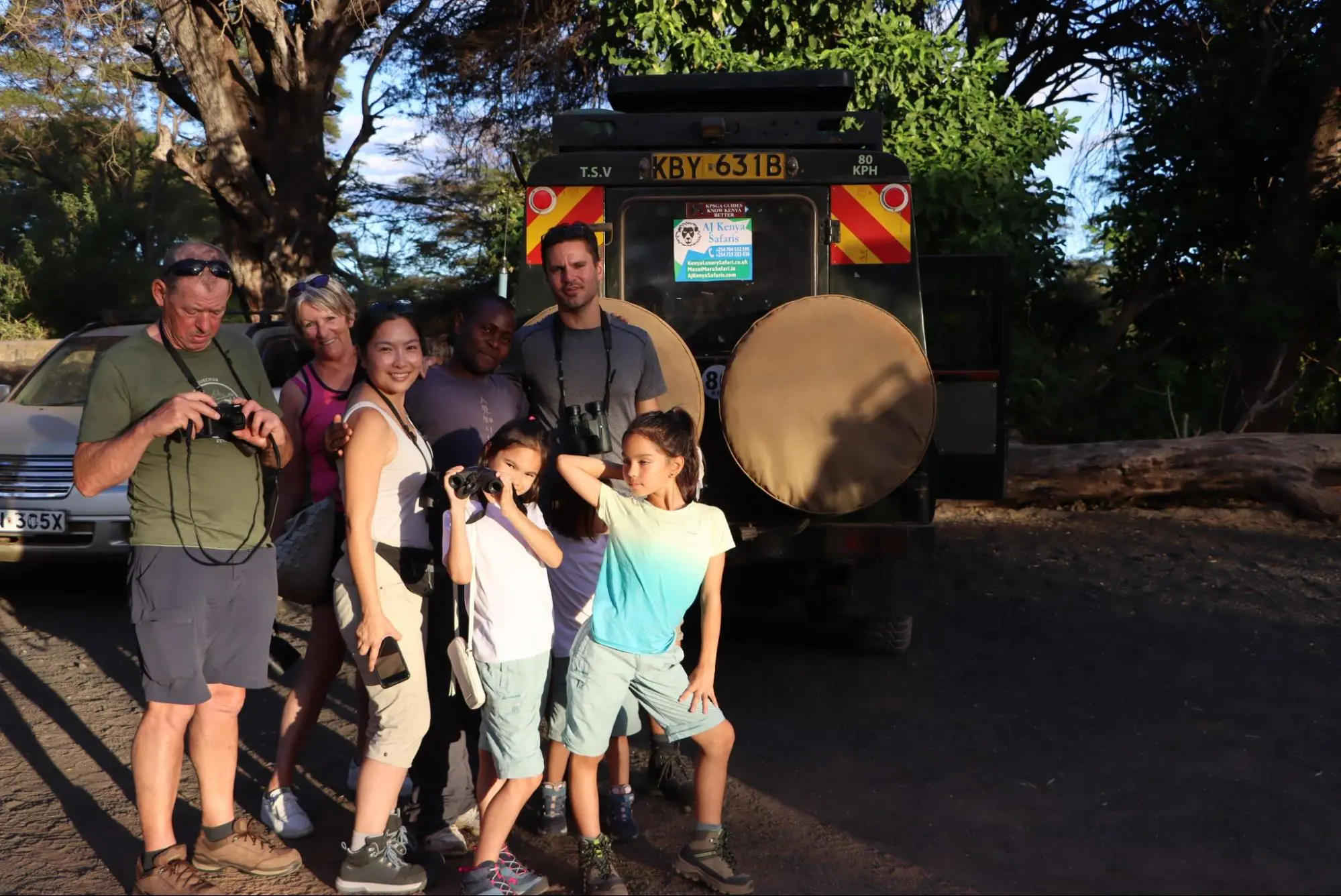
Month by month: the Serengeti wildebeest migration
The best time to see the Masai Mara Migration Safari is during the 2024 Masai Mara wildebeest migration months (July to October). The exact dates may vary slightly each year, but generally speaking, here is what you can expect at different periods of the year.
January-March: The Calving Season (Southern Serengeti - Ndutu region).
The start of the year marks the start of new lives for the wildebeest. The herds are best seen in the short grass plains between Lake Masek and Lake Ndutu. On any ordinary day, 10,000+ wildebeest are born. In a few short months’ time, 1,000,000+ calves will join the group.
January to March are mostly dry in the regions around southern Serengeti. However, lush grass is still abundant in the region supported by the mineral-rich volcanic soil of these regions and the occasional showers that happen at this time. The ideal region to see the calving season is in the southern Serengeti, mostly in the Ndutu region. Predator attacks are few at this time since the short grass plains enable the wildebeest to spot the wild dog, lions, leopards, and other predators in advance.
April to May - Central Serengeti (Low Tourism Season)
As the Serengeti dries out and food becomes scarcer, the wildebeests begin the migration north towards the Mara. Two factors trigger the wildebeest and zebra to start searching for fresh grazing grounds. First, the large number of calves that now need to be fed. Second, the mostly dry weather between January and March automatically causes a shortage of grass.
The epic journey (a circular clockwise movement) begins with slightly over 1.7 million wildebeest, over half a million antelope, and more than 250,000 zebras. The Herd’s first stop is Seronera Valley (located in Central Serengeti). The short grass plains of the Soronera valley provide good game viewing year-round. However, between April and May, the usual sightings of Elephants and big cats are complemented by the arrival of the frantic herds. The arrival of the Serengeti wildebeest migration coincides with the start of long rains in the valley.
NB: It is generally believed that the wildebeest and zebra follow the same age-old route. The great migration is dictated primarily by the search for fresh grazing plains. The animals move between Serengeti and Maasai Mara such that they will be in Kenya shortly after the rains begin and the grass is abundant.
April to May is the best time to plan a great wildebeest safari for budget travelers. Few travelers visit the park at this time, resulting in the cheapest rate for a safari. Besides short interruptions from the rain, it is still possible to see the animals.
May-June - Grumeti River Crossings in Serengeti's Western Corridor
The Masai Mara migration spectacle – where the wildebeest cross the Nile crocodile-infested River – is the most popular aspect of the migration. However, the Grumet river crossing in the Western Serengeti shouldn’t be missed either.
The Grumeti River is one of the most dangerous places for wildebeests. The river is full to the brim with Nile crocodiles just waiting to take advantage of the migratory herds. Actually, Grumeti is home to the largest population of these predatory reptiles in East Africa. These predators are some of the largest obstacles that the wildebeest faces. Some of the most memorable predator-prey photos are taken during this part of the wildebeest funnel.
Nevertheless, the Serengeti wildebeest migration continues on the migration route, with many of them falling prey to the predators. Despite the severe attacks by the crocodiles, the herds are strengthened by new members as the new wildebeest calves gain strength and start crossing the Grumeti River. Over one million animals head north arriving along the banks of the Mara river in early July. Right at the end of the rainy season when the Mara is loaded with lots of nutritious grasses.
NB: The migration patterns and dates are not fixed. Sometimes the herds lounge along the Ngorongoro conservation area for longer (the mating season), arriving along the Mara River in Mid July. Mobile camps are often set up and relocated to follow the migration. Some mobile camps also allow walking safaris, allowing a more up close exploration of the Serengeti National Park.

July-September -The Wildebeest Herds Cross the Mara River
Between July and September, the great migration head north towards Northern Serengeti, and by early July, they mostly graze along Kenya’s Tanzania border. Anytime from July, the herds can begin crossing the mara river.
There is no set schedule for when the crossing will start. The animals, lured by the greener pastures in Maasai Mara and its private conservancies, start to cross at random hours of the day. Tracking the migration is a daily activity and mostly depends on luck as well. However, with a 4-day Maasai Mara migration safari, chances are 90% you will see the migration.
The Masai Mara river (which is different from the Talek River that is also inside Maasai Mara), poses a major barrier to the animals crossing from Tanzania. The river is mostly swollen from the long rains that end in June. The water visibility is also poor, providing perfect camouflage for the deadly Nile crocodiles that lay in weight.
It is estimated that hundreds of thousands the wildebeest, many zebra, and Grant’s gazelles are either drowned, attacked by the big cats, or killed by crocodiles. The most recent estimate puts the number of wildebeest that die at over 200,000 thousand each year.
Photographers and documentarians travel to Kenya to see the wildebeests attempt to cross the river. While the animals are certainly an amazing sight, the surrounding landscapes are just as beautiful and worth remembering.
October-December - The Animals Start Heading South
From October to Early November, the migration patterns now change. The animals start heading south as the Maasai Mara National Park begins to dry out once again, encouraging the wildebeest herds to move south back to Serengeti. The migration cycle continues, as the Serengeti becomes a prime source of food and water for the wildebeest.
It is the Largest Multi-Species Overland Animal Migration on the Planet
On a great migration in Kenya 2024 safari, you will not only witness millions of wildebeest making a continuous epic crossing, but you will also see them trailed by hordes of other companions and predators.
Among the friendly companions are hundreds of thousands of zebras, topi, and gazelle.

When to Plan Your 2024 Wildebeest Migration safari in Kenya
The wildebeest migration 2024 shall occur between July-October 2024. It is thus advisable to schedule your trip with that season in mind, as that is the height of the migration.
Contrary to what most people think, the annual wildebeest migration is not one-day. Instead, it is continuous overland migration that spans several months
2024 Wildebeest Migration Safari Planning Guide
To help you plan your wildebeest migration safari in 2024, we have endeavored to answer the most common questions visitors may have.
1. What is the Great Migration in Maasai Mara 2024
The 2024 Maasai Mara migration is a dramatic annual movement of more than two million wildebeest, more than 200,000 zebras, eland, gazelles, and several other herbivores. They move from the Serengeti in Tanzania to the Masai Mara in Kenya. It is the largest overland animal migration globally.
Apex predators assail the animals throughout their journey into Kenya, making this mass exodus a dramatic affair. A KenyaLuxurySafari.co.uk great migration in Kenya 2024 safari is an opportunity to see this incredible spectacle first hand.
2. What Month is the Great Migration in Kenya in 2024 - 2025?
The annual wildebeest migration runs for a couple of months every year, typically falling between July- October. The migrant herds move in a cyclical pattern that defies scientific explanation. It is a journey borne of instinct.
3. How Often Do the Maasai Mara Wildebeest Migration Occur?
Maasai Mara wildebeest and other herbivores make their epic voyage just once every year.
It is a trip that runs between July-October and coincides with the wildebeest’s calving season.
At the end of the migration, the migrant herds move back to Tanzania once more in January-March.
4. What is the Best Time to Visit Maasai Mara to See the Wildebeest Migration 2024?
July- October is the best time for a 2024 Maasai Mara wildebeest migration safari.
Not only is it the peak of the migration, but it also coincides with the dry season, making it an opportune time to enjoy all the dramatic wildlife action.
What month is the great migration in Africa?
August has long been characterized as the best time to watch the Great Migration. Between July and August wildebeest migrate masses through Kenyan Maasai Mara, crossing the Mara in staggering amounts.
How long does wildebeest migration last?
The Great Migration is a year-round circular voyage. The wildebeest migrate between the Serengeti Maasai Mara ecosystems.
What is the Serengeti migration?
The Serengeti Migration is the movement of over 1.7 million wildebeest, Zebras, gazelles, and topis from the Serengeti to the Maasai Mara in Kenya. They follow a year-round funnel that is never-ending. The Serengeti wildebeest migration was named one of the eight wonders of the world in 2007. It is also one of the wonders of the natural world.
Where and Why Does the Great Wildebeest Migration Happen?
Every year, over one million wildebeest travel in a circular migration across the Serengeti Plains, following seasonal rains. The great wildebeest migration is an annual movement of millions of wildebeest, accompanied by large numbers of zebra, Grant’s gazelle, Thompson’s gazelle, elands, and impalas across the greater Masai Mara-Serengeti ecosystem.
The Serengeti Plains is the most well-known of Africa’s many savanna regions. The Serengeti plains ecosystem covers an area of 30,000 square kilometers (11,583 square miles). It encompasses both the Masai Mara national reserve in Kenya and Tanzania’s Serengeti National Park. The Serengeti is home to some of the highest concentrations of large mammals on the continent, including Cheetahs, lions, rhinos, hyenas, wildebeests, zebras, giraffes, leopards, and elephants.
The best time to plan a great migration safari mostly depends on what you want to do and see in Africa. However, July to September is when you are most likely to see the most memorable aspect of the great migration. It’s when the herds start making the dramatic river crossings from Northern Tanzania to Masai Mara ecosystems. The Maasai Mara ecosystem encompasses both the Masai Mara plains, the Mara triangle, and the conservancies.
From October to November, the migrating wildebeest herds become more cohesive as they all travel south through western Loliondo and Serengeti National Park’s Lobo area in search of food. The herds can now be seen in Kogatende and Lamai (Northern Serengeti).
What Month is the 2024 Great Wildebeest Migration?
Please note that the timing of herd movements cannot be guaranteed. The secrete is to choose the right part of the Serengeti national park as follows:
- The southeast Serengeti and Ndutu from December through to May.
- The Western Corridor of the Serengeti from May to July.
- The Serengeti Mara ecosystem from July through to October.
- The northern Serengeti and Lobo area in October and November.
With timing as given above, large herds of wildebeest and their entourage should be easily located. Overall, the best time to visit the Serengeti is during the Grumeti river crossings. Some guests opt to see the Mara River Crossings from the Serengeti national park. However, the best views are captured from the Maasai Mara National Reserve.

